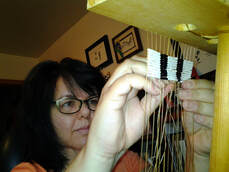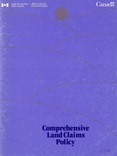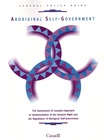The Trap of Federal Policies John A. Olthuis and H.W. Roger Townshend provide a legal analysis of the federal government’s Specific Claims Policy that many people will find interesting, and that can be applied to the federal government’s Comprehensive Land Claims Policy and self-government policy known as the Inherent Right Policy. They offer that the policy can be challenged as a violation toward Indigenous people and their lands. While I admit I am not a lawyer, I provide a brief summary of their analysis here. Olthuis and Townshend explain that natural justice is defined by the principles of two related objectives. First, people should not be adversely affected without a hearing, and second, decisions affecting people must be made by an impartial and none biased tribunal. In establishing the Comprehensive Land Claims Policy the federal government has violated/s the principles of natural justice in that they have unilaterally constructed the policy which is therefore biased, and it is the federal government, rather than an impartial body, that judges whether a statement of land claim will move forward, against itself no less. In this way, the federal government has violated and continues to violate the principles of natural justice. Olthuis and Townshend also explain that equity law is a form of justice that is administered according to rules of fairness. Equity law seeks to restore wronged parties to the conditions that would have existed if the breach had not occurred. They also explain that a fiduciary is a person who stands in a position of trust to another. Interestingly, fiduciary responsibility emerges from equity law and as such it is reasonable for a person relying on the fiduciary to expect the fiduciary to act with a degree of fairness, loyalty, and honourable conduct. Equity law and fiduciary responsibilities extend to policy-making and given this, unilaterally drafted federal policies, which construct limitations on Indigenous people in their attempt to live better, are a violation of equity law and the Crown’s fiduciary responsibilities. Olthuis and Townshend also address the issue of whether the compensation amounts awarded First Nations fall within legal guidelines. According to equity law, the general principle behind compensation is that the imposed loss is to be made good where compensation is to be assessed with reference to the value of the assets at the date they are restored rather than the date at which they were improperly taken. This means that any increase in the market value of the assets is the responsibility of the trustee. Olthuis and Townshend argue, “It is our view that the federal specific claims policy and process with respect to validity and compensation violates the principles of equity, the federal constitutional responsibility and the fiduciary duty owed” (82). The Slap of Agreements in Principle Recently I overheard a discussion between two Algonquin that left me feeling on the one hand horrified, yet on the other hand a glimmer of gratefulness that someone has been fulfilling their clan responsibilities. The first person argued that the Algonquin must not dismiss the currently tabled, and soon to be ratified, Algonquin agreement in principle (AIP), “merely on two items”, those items being the amount of land and the amount of resource revenue sharing stated. The other person responded in a way that I thought was simple yet clever. This person stated that if someone was to read through the AIP and gather up as many as twenty-two good points, this larger number – twenty-two – alone does not in itself mean that the two points of land and resources are not the most significant to the Algonquin future. Many people, such as Elijah Harper and Alice Olsen Williams, have long made this argument of the importance of land and resources. That said, it is important to stress that many people are not skilled at reading policy and law, AIPs included. Reading them is the specialized skill of lawyers and policy makers. Olthuis and Townshend are two qualified individuals that have evaluated past AIPs to determine why it is that they cannot be relied upon as a true source of land claims and self-government settlements. They provide a discussion of the James Bay Cree and the Northern Quebec Agreement. In asking, “What is it about the structure of the claims settlements that leads to non-implementation?” Olthuis and Townshend identify three factors that have led to non-fulfillment: A lack of political will on the part of non-indigenous governments; Vaguely worded provisions in the agreements; and, Missing elements (41). A lack of political will is the practice whereby Canada, in their desire to eliminate their constitutional and legal obligations as cheaply as possible, defines their responsibilities in very narrow terms rather than addressing the real issues. In terms of vague provisions, Olthuis and Townshend argue this approach occurs when matters cannot be agreed upon resulting in the issues being papered over. This papering over, or alternatively stated vagueness in agreements, makes it difficult for Indigenous peoples to then rely upon the AIP to assure the fulfillment of their rights. In terms of missing elements, this approach occurs when provisions are excluded in the final agreements, in particular provisions related to jurisdiction of Indigenous governments. As a result, the final agreements lack clarity on the jurisdiction needed to viably operate the programs and institutions established in the very agreements. Thus, although final agreements are achieved, unresolved matters resurface. Olthuis and Townshend conclude that due to a lack of political will, papering over issues, and a lack of jurisdictional clarity, the governments of Canada are merely negotiating a document rather than a viable future for Indigenous people. In the case of the James Bay Cree, the document was one of 450 pages loaded with highly technical and legally complex jargon. Olthuis and Townshend also offer that once these agreements are ratified they are viewed as the beginning of the end of a relationship between governments and First Nations, rather than the beginning of a new relationship, where Indigenous people are then forced to litigate Canada into implementation. At the same time, these final agreements provide for the legislative extinguishment or the release of all Indigenous interests to the territory covered by the AIP. The Union of British Columbia Indian Chiefs offer, “Modern land claims agreements will create a double standard in which the interests of the federal and provincial Crowns and third parties are recognized. These rights will simply continue to exist, they will change and adapt over time, they will continue to live. … The rights of the Indigenous Peoples’, on the other hand, will be frozen and will not grow and adapt. If these rights are not written into the Agreement, they will no longer exist, they will be dead” (n.p.). It is precisely for this reason that Russell Diabo argues, “Canada’s Land Claims and Self-Government policies are far below the international standards set out in the Articles of the United Nations Declaration on the Rights of Indigenous Peoples” and refers to the process as a process of self-termination (4). The Crap of the Algonquin Offer Recently, after hundreds of years of asking that our rights to land, resources, and self-government be respected, and after twenty-three years of negotiating, the Algonquin of Ontario offer was tabled: 1.3% of our traditional territory and a $300 million payment. Finding this settlement offer disturbing Algonquin Anishinaabe-inini Michael Ranger offers, “The Creator entrusted us with protecting this land to ensure it can support future generations. This land is not just ours, it belongs to our children and future generations.” He adds, “They have an interest and stake in this land, how can we legally sell their interest in it?” References Diabo, Russell. “Harper Launches Major First Nations Termination Plan: As Negotiating Tables Legitimize Canada’s Colonialism.” First Nations Strategic Bulletin 10.7-10. June-Oct. 2012. 15 Nov. 2012 <http://intercontinentalcry.org/wp-content/uploads/2012/11/FNSB-July-Oct-12.pdf>. Olthuis, John A., H.W. Roger Townshend. “Is Canada’s Thumb on the Scales? An Analysis of Canada’s Comprehensive and Specific Claims Policies and Suggested Alternatives.” For Seven Generations: An Information Legacy of the Royal Commission on Aboriginal Peoples. CD-ROM. Ottawa: Libraxus, 1997. Union of British Columbia Indian Chiefs. “Certainty: Canada’s Struggle to Extinguish Aboriginal Title.” 23 Feb. 2013 <http://www.ubcic.bc.ca/Resources/certainty.htm#axzz2Nc7YY Zwe>.  Lynn Gehl is an Algonquin Anishinaabe-kwe from the Ottawa River Valley. She has a section 15 Charter challenge regarding the continued sex discrimination in The Indian Act, is an outspoken critic of the Ontario Algonquin land claims and self-government process, and she recently published a book titled Anishinaabeg Stories: Featuring Petroglyphs, Petrographs, and Wampum Belts. You can reach her at [email protected] and see more of her work at www.lynngehl.com.
3 Comments
michael ranger
3/24/2013 02:11:41 am
While I definitely agree with the findings of Townshend and Olthuis, the real problem is that the Government of Canada's land claim policy is geared towards extinguishing aboriginal ownership of land. The process is illegal and violates aboriginal self-determination. The fact is, Aboriginal Sovereignity is compatible with Canadian Sovereignity. One way to make joint occupation work is entering into constitutional accords.
Reply
Lynn Gehl
3/31/2013 11:59:39 am
Thanks Michael, That is precisely the point of the blog. I am glad you agree. Lynn
Reply
scott phillip hayes
4/2/2013 12:20:45 pm
good article and nice site, problem is law is by land perspective, not LEGAL perception, the land stolen is returned to the original owners: the women of turtle island; north and south and inbetween: uberrima fides to the TRUSTEE's and CLAIM JUMPERS, inequality is inequity. :)
Reply
Your comment will be posted after it is approved.
Leave a Reply. |
|
To subscribe to Lynn's Blog: click here
To subscribe to Lynn's Newsletter: click here To follow Lynn on her Public Facebook Page: click here To subscribe to Lynn's YouTube channel: click here To book Lynn as a speaker: click here To contact Lynn/License her work: click here Copyright Dr. Lynn Gehl, 2024 All Rights Reserved
|


 RSS Feed
RSS Feed
